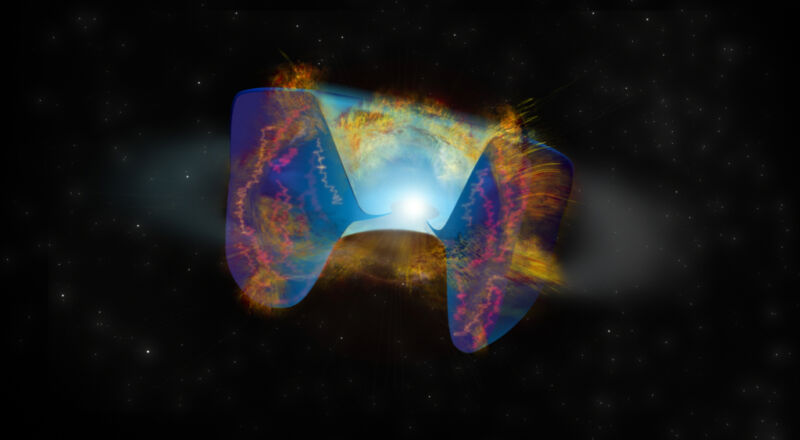
Enlarge / A model of the supernova exploding inside a torus of gas ejected years earlier. (credit: Bill Saxton, NRAO/AUI/NSF)
One of the stranger features of our Universe is the existence of what you might call “dual-core stars.” Many stars exist as part of a multistar system, and in some cases, their orbits are extremely close. Couple that with the fact that stars can expand as they age, and you get a situation in which the outer edges of one star may engulf a second. Friction can then draw the stars’ orbits closer, resulting in the core of both stars orbiting within a large, shared envelope of plasma.
Things can get more complicated still when you consider that the stars won’t necessarily have life cycles that line up well—one of them could easily explode before the other, leaving behind a black hole or a neutron star. That can lead to some bizarre situations, like a star that replaces its core with a neutron star.
Now, researchers say they have probably found a more violent alternative to that merger. In this case, the neutron star didn’t settle neatly into the core of its companion star. Instead, the companion star lost its outer layers to space and then saw its core disrupted in a way that caused it to explode.
